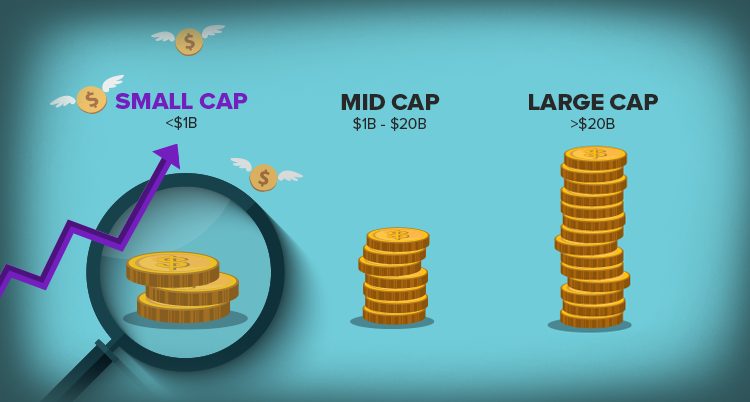
How to Research Small-Cap Stocks – 2020 Guide
December 10, 2020Small-cap stocks are alluring. They often outperform large-cap stocks and have delivered returns of 100 times or more. But they are also some of the most volatile stocks on the market and come with high risks. In order to be best-informed, it is important to know how to research small-cap stocks. The problem with this is that small-cap companies do not garner as much attention as their larger counterpart; there usually is not a lot of information on small-cap stocks readily available, which makes researching them difficult. Read on to discover what you can do to make researching small-cap stocks a breeze.
Why Invest in Small-Caps?

Source: invictus-resources.com
With their volatile price swings and susceptibility to crumble under financial downturns, investing in small-cap stocks does not sound appealing at first. But there are reasons to consider investing in them nonetheless. The past decades have shown that small-cap stocks outperform their larger counterparts more often than not. As a matter of fact, small-cap stocks outperformed large-cap stocks 20 times in the course of 37 years from 1979 to 2015. They tend to give higher returns and could even be more profitable than large-cap stocks in the long run.
Investing in small-cap stocks also adds diversity to your portfolio, which investors argue is one of the most important components of being able to reach long-term financial goals while insulating yourself against the risk of financial loss. If you end up losing money in one investment, the potential returns from another investment could offset that loss, so that overall your assets are stable.
The main appeal of investing in small-cap companies is that you could potentially be investing in the next Amazon or Apple. Investing in small-cap companies that are in their expansion phase is different than investing in large-cap companies. With larger, established companies, they have already maxed out their growth factor. They will continue to grow, but it is nowhere near as to how much smaller companies will grow. When a company is in its expansion phase, the stock prices are still relatively low. If you invest then, it means that you could potentially make more money than investing in a large-cap whose stock prices don’t have the potential to grow as much as smaller companies. The key to bettering your chances of investing in the next big company is to do your research and know what you are looking for in a small-cap. There are four main things to consider when investing: growth potential, market type, paradigm shifts, and resources available.
Know What You are Looking For

Source: nairametrics.com
Since information is scarce and buried deep, the most important thing to do when researching is to know what you are looking for. A lot of factors come into play with small-cap stocks—and analyzing each factor could be the difference between a great gain or a large loss. Some factors to research are:
1. Growth potential
Growth potential matters. Because small-cap stock tends to outperform large-cap stock, revenue growth over 20% is ideal. If you do not see a big profit margin in a small-cap, don’t shy away. This is typical since they are in their expansion phase. The thing to watch out for is that the net income will be on the rise to narrow losses. Past price appreciation is also essential to consider. Generally, the best-performing stocks will have a background marked by outperformance, so make sure that your potential investment has a history of outperformance. Other things to take into account are price-to-earnings and price-to-sale ratios.
2. The Type of Market
Like most companies, small-cap companies are affected by the economy and the market cycle. Usually, the best time to invest in small-cap stocks is when the U.S. economy is strengthening. They also tend to outperform in young bull markets. Investing in small-cap stocks during a time of economic growth is more likely to produce profit than in other types of markets. Analyzing the type of market you are in will help you determine when to buy small-cap stocks. It is also worth noting that small-caps could be affected more by local markets than their larger counterparts, who are affected by global economic conditions.
3. Paradigm Shifts

Source: portaleducando.com
When it comes to investing, paradigm shifts refer to when new business or growth opportunities arise. Scour the market and different types of fields to see if there is anything that a small, up-and-coming company can provide a unique solution for. For example, when the move from CD to DVD happened in the 90s, there was a new need for conversion software. Luckily for some small-cap companies, they specialized in that and increased their value since they had a service that was readily available when suddenly needed. Foreseeing these types of market shifts could lead you to small-cap stocks with huge growth potential.
4. Read the Resources
One of the best ways to research a small-cap company and analyze their stocks is to look into their resources. Platforms like OTC Markets publish small-cap companies’ earnings presentations, transcripts, and press releases. Reading these resources and really delving into their numbers is what will make the difference when investing in small-caps. Sometimes you can utilize other media that provides relevant sources, like Dear Retail, so you spend more time studying and less time searching.
The Right Research Makes All the Difference

Source: economictimes.indiatimes.com
When you take into consideration factors like earnings reports, types of markets, paradigm shifts, and growth potential, you are doing yourself a favor. You are making sure that the small-cap you invest in is the best possible choice for you. Knowing how to research small-cap stocks is a great tool in your arsenal that will give you leverage when investing in the small-cap market.
Becoming proficient in your research does take time. Consider practicing your analyzing skills to accelerate the learning process. Practicing 100 deals per year will get you prepared faster than only analyzing 5-10 deals that are real opportunities. This allows you to learn quicker what is and is not a good opportunity.
Continue to follow the advice from this blog. Read from more resources as well and your investing mind will become a strong tool.


